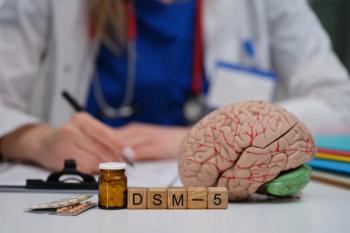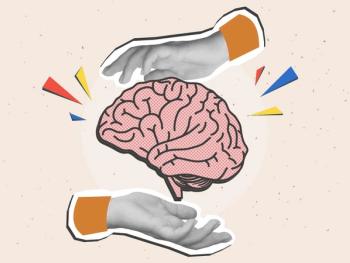
Non-Psychiatric Medications With Potential to Worsen Symptoms in Major Depression
“Are my other medications making my depression worse?” Researchers investigated associations between medications with potential depressive symptom adverse effects and the level of depressive symptoms in a large survey study.
CASE VIGNETTE
“Mr Mills” is a 45-year-old Caucasian male with a history of recurrent, moderate major depressive disorder (MDD). He also has significant symptoms of anxiety. He does not smoke, drink alcohol, or use illicit drugs, and his body mass index is 25. He has comorbid hyperlipidemia, but no other medical problems. His psychotropic medications include sertraline 100 mg daily for depression and propranolol 20 mg twice daily for anxiety. He also takes simvastatin 20 mg at bedtime for cholesterol.
Mr Mills noticed some muscle cramps, which he attributed to the simvastatin, and started taking over-the-counter co-enzyme Q10 as a supplement. The muscle cramps improved, but over the next 2 months, he noted a steady worsening of depressive symptoms in the absence of other specific stressors. He stopped the co-enzyme Q10, and within 2 to 3 weeks his mood returned to baseline. He discussed this experience with his outpatient psychiatrist and asked about other medications that might be associated with worsening depression.
Residual depressive symptoms are common in
Patients with depressive and medical comorbidities often use non-psychiatric medications that may themselves be associated with increased risk of depressive symptoms.5
The Current Study
Mojtabai and colleagues6 used data from the National Health and Nutrition Examination Survey (NHANES) to examine the association between medications with potential depressive symptom side effects (PDSS) and the level of depressive symptoms in antidepressant-treated patients with MDD. Data were drawn from NHANES 2013 to 2014, 2015 to 2016, and 2017 to 2018 surveys of the US general population.
The sample was limited to 885 adults taking antidepressant medications for at least 6 weeks and with data on depressive symptoms. Non-psychiatric medications with PDSS were identified as those with “depression” or “depressive symptoms” listed as common or serious adverse effects using Micromedex.
Respondents were asked about the “main reason” for taking each medication, and their reasons were translated into ICD-10 codes. Current depressive symptoms were measured with the Patient Health Questionnaire=9 (PHQ-9). PHQ-9 scores were dichotomized into no-to minimal (< 5) and moderate-to-severe (≥ 10) depressive symptoms. Data were also obtained on age, sex, race/ethnicity, income, education, health insurance, and common chronic medical conditions.
Binary logistic regression models were used to investigate the associations between the number of medications with PDSS and a) no/minimal and b) moderate/severe depressive symptoms. The numbers of medications without PDSS were included in each model as a placebo test. Separate logistic regression models were repeated in more homogenous groups of patients with MDD and arthritis and MDD and hypertension, separately.
The majority of the 885 participants were female (71%), aged ≥ 50 years (62%), and non-Hispanic white (82%), and had a college education (69%). Selective serotonin reuptake inhibitors were the most common class of antidepressants (68%). The majority of patients (79%) had been on the same antidepressant for > 1 year. Similarly, 85% used ≥ 1 medication for medical comorbidities, 67% used ≥ 1 medication with PDSS, and 75% used ≥ 1 medication without PDSS.
Compared to other participants, those with arthritis and heart disease had significantly lower odds of no/minimal symptoms and significantly higher odds of moderate/severe symptoms. Patients with liver and lung disease also had significantly higher odds of moderate/severe symptoms.
After adjusting for potential confounding/moderating factors, more medications with PDSS were associated with significantly lower odds of no/minimal symptoms (OR=0.75, 95% CI 0.64-0.87) and significantly higher odds of moderate/severe symptoms (OR=1.14, 95% CI 1.00-1.29). By contrast, there were no associations between medications without PDSS and depressive symptoms. Findings were similar in analyses limited to participants with arthritis and hypertension.
Individual medications significantly associated with the severity of depressive symptoms included omeprazole, gabapentin, meloxicam, tramadol, ranitidine, baclofen, oxycodone, tizanidine, propranolol, and morphine. There was a dose-dependent effect of PDSS. The proportion of patients with no/minimal symptoms ranged from 51% in those not using any medications with PDSS to 5% in those using ≥ 3 such medications.
Similarly, the proportion of patients with moderate/severe symptoms ranged from 22% in those not using any medications with PDSS to 63% in those using ≥ 3 such medications.
Study Conclusions
The authors concluded that individuals treated for MDD frequently use non-psychiatric medications for comorbid medical conditions that are associated with an increased risk of depressive symptoms.
Associations of medications with PDSS and depressive symptoms are not attributable to chronic medical comorbidities associated with both medication use and worse treatment outcomes in depression. Importantly, 7 of 10 medications found to be associated with higher depressive symptoms are used for the treatment of pain or muscle spasms.
Study limitations include the residual confounding by medical comorbidities or pain, detailed clinical information about MDD in participants, and the cross-sectional design and self-report nature of the survey.
The Bottom Line
Management of medical comorbidities, including judicious selection of medications with PDSS, could improve response to antidepressant treatment and patient outcomes.
Dr Miller is a professor in the Department of Psychiatry and Health Behavior at Augusta University in Georgia. He is on the Editorial Board and serves as the schizophrenia section chief for Psychiatric Times®. The author reports that he receives research support from Augusta University, the National Institute of Mental Health, and the Stanley Medical Research Institute.
References
1. Mojtabai R.
2. Zisook S, Johnson GR, Tal I, et al.
3. Chan KL, Cathomas F, Russo SJ.
4. Nelson J, Klumparendt A, Doebler P, Ehring T.
5. Botts S, Ryan M. Depression. In: Tisdale JE, Miller DA, eds.
6. Mojtabai R, Amin-Esmaeili M, Spivak S, Olfson M.
Newsletter
Receive trusted psychiatric news, expert analysis, and clinical insights — subscribe today to support your practice and your patients.















